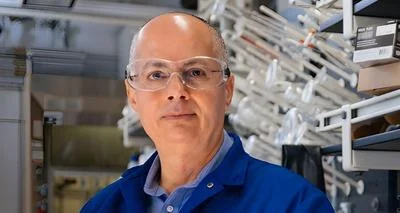Santa J. Ono, Ph.D. President at University of Michigan - Ann Arbor | Official website
Santa J. Ono, Ph.D. President at University of Michigan - Ann Arbor | Official website
Desalination, a crucial technology for producing freshwater in arid regions, could soon become more sustainable with reduced waste output. Researchers at the University of Michigan have developed new membranes that could help minimize or even eliminate the brine waste typically generated when converting seawater into drinking water.
Currently, desalination plants produce about 1.5 liters of brine for every liter of freshwater. This brine, often stored in evaporation ponds, poses environmental risks such as potential groundwater contamination and negative impacts on marine ecosystems due to rising salt levels. Addressing these challenges, Jovan Kamcev, an assistant professor at U-M and a corresponding author of the recent study in Nature Chemical Engineering, emphasized the industry's focus on finding better solutions. "Our technology could help desalination plants be more sustainable by reducing waste while using less energy."
Traditionally, brine concentration involves energy-intensive heating or reverse osmosis, which is limited by salinity levels. Electrodialysis emerges as a favorable alternative, working efficiently at high salt concentrations with less energy consumption. This method uses electricity to separate ions through oppositely charged membranes and electrodes, effectively producing streams of purified water and concentrated brine.
The challenge of ion leakage through electrodialysis membranes at high salinity is addressed by the U-M team. They have developed membranes with a high density of charged molecules, enhancing both ion-repulsion and conductivity. The addition of carbon connectors further stabilizes the membranes by preventing swelling and maintaining charge density.
David Kitto, the study's first author and a postdoctoral fellow in chemical engineering, highlighted the versatility of the new membranes. "Each membrane isn’t fit for every purpose, but our study demonstrates a broad range of choices," Kitto noted. The potential for customization aims to improve desalination processes and make them more sustainable.
This research, backed by the U.S. Department of Energy and utilizing resources from the University of Pennsylvania's NSF-funded facilities, is a step towards patent protection with assistance from U-M Innovation Partnerships. The findings suggest a promising path forward in addressing the global water crisis with more eco-friendly desalination technologies.





 Alerts Sign-up
Alerts Sign-up